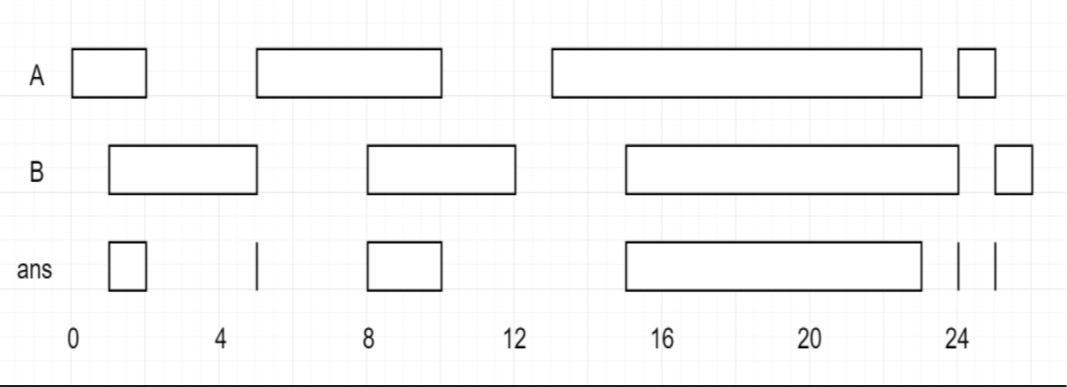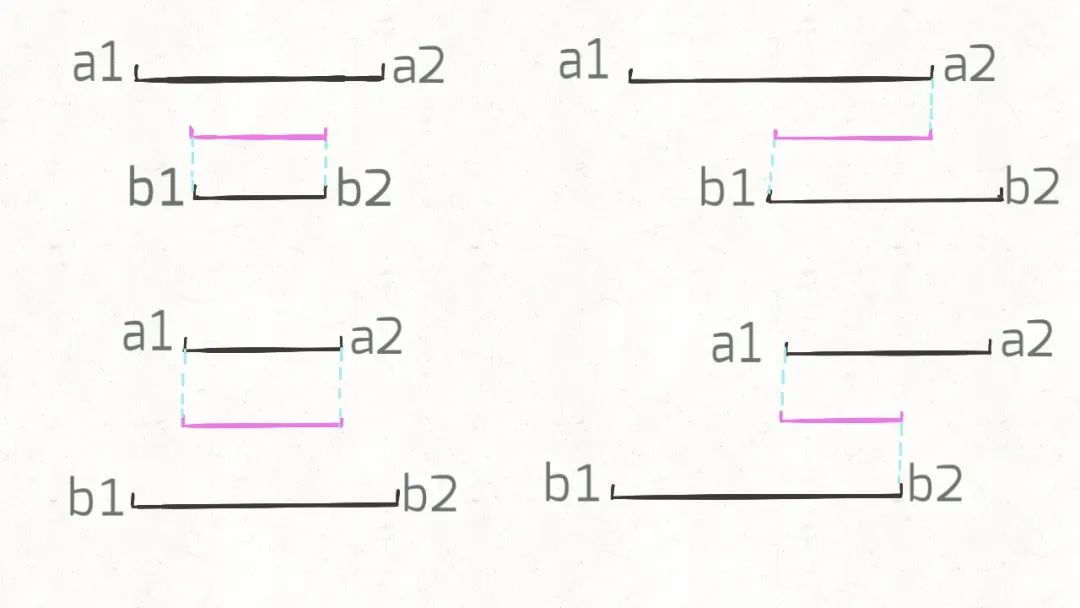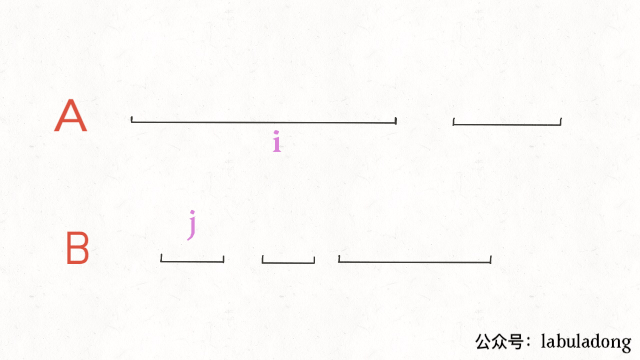区间列表的交集
题目
给定两个由一些闭区间组成的列表, firstList 和 secondList, 其中 firstList[i] = [starti, endi] 而 secondList[j] = [startj, endj]. 每个区间列表都是成对不相交的, 并且已经排序. 返回这两个区间列表的交集.
形式上, 闭区间 [a, b] (其中 a <= b) 表示实数 x 的集合, 而 a <= x <= b.
两个闭区间的交集是一组实数, 要么为空集, 要么为闭区间. 例如, [1, 3] 和 [2, 4] 的交集为 [2, 3].
示例

输入: firstList = [[0,2], [5,10], [13,23], [24,25]], secondList = [[1,5], [8,12], [15,24], [25,26]]
输出: [[1, 2], [5, 5], [8, 10], [15, 23], [24, 24], [25, 25]]
题解
看到区间问题先要做排序, 因为该题的数组已经排序了, 这里就不用 care 了. 因为是找交集, 可以先反着看, 即什么情况下是没有交集的. 通过下图可以发现, a2 < b1 || b2 < a1 时, 是没有交集的; 反过来, 也就是 a2 >= b1 && b2 >= a1 时, 才会有交集.

接着我们把所有交集的情况列出来, 如下图所示, 可以看到对于交集 [c1, c2], 那么 c1 = Math.max(a1, b1), c2 = Math.min(a2,b2).

最后, b2 < a2 时, j 向右移动, 否则 i 向右移动.

/**
* @param {number[][]} firstList
* @param {number[][]} secondList
* @return {number[][]}
*/
var intervalIntersection = function (firstList, secondList) {
const firstListLen = firstList.length
const secondListLen = secondList.length
let i = 0,
j = 0
const res = []
while (i < firstListLen && j < secondListLen) {
const a1 = firstList[i][0]
const a2 = firstList[i][1]
const b1 = secondList[j][0]
const b2 = secondList[j][1]
if (b2 >= a1 && a2 >= b1) {
res.push([Math.max(a1, b1), Math.min(a2, b2)])
}
if (b2 < a2) {
j += 1
} else {
i += 1
}
}
return res
}